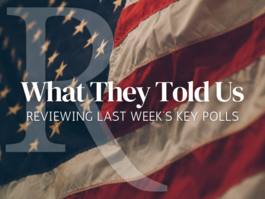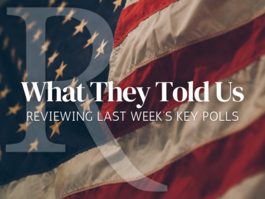After 20 Years, Success of Family and Medical Leave Act Should Humble the Far Right
A Commentary By Joe Conason
When Bill Clinton signed the Family and Medical Leave Act on Feb. 5, 1993 almost exactly 20 years ago as the first legislative act of his presidency, its establishment as law marked a progressive victory after nearly a decade of ferocious opposition by corporate lobbyists, Republican legislators, conservative media and right-wing pundits.
Leading the opposition was the U.S. Chamber of Commerce, whose spokeswoman Virginia Lamp denounced the act as "a dangerous precedent." (She would eventually marry Supreme Court Justice Clarence Thomas and move on to employment with the Koch brothers.) With the honorable exception of the Catholic Church and a number of moderate Republicans in Congress, the self-proclaimed "pro-family" forces in American political life eagerly aided and abetted the Chamber's attempt to kill the act. Mandating a federal right to unpaid leave, even if restricted to certain workers in larger businesses, would place the nation on a slippery path toward European socialism, or worse, according to the Chamber and its Republican allies and impose untold damage on business.
But now we know, as with so many other warnings from the far right about the supposedly ruinous consequences of social progress, how the actual results have differed from those predictions. And with two decades of experience, it is clear that the difference has been dramatic.
Put simply, the act's protections have proved vital for millions of families across the country, whether in times of joy or hardship. Debra Ness, the president of the National Partnership for Women and Families, which drafted the original bill and assembled the victorious coalition that supported it, estimates that the law has been used over 100 million times "by women who needed medical care during difficult pregnancies, fathers who took time to care for children fighting cancer, adult sons and daughters caring for frail parents, and workers taking time to recover from their own serious illnesses." The latest Department of Labor survey of employees and employers indicates that up to 14 million employees took leave in 2011.
Released this week to coincide with the act's anniversary, that study not only demonstrates how vital it is to American families but how beneficial it has been for the national workforce and economy. Indeed, rather than imposing an insufferable burden on business, the act has enhanced productivity and profit as well as protecting children, the ill and the elderly.
According to the DOL study -- which was subcontracted to Abt Associates, one of the country's oldest and most respected private consulting firms -- most employers have not found compliance particularly burdensome. Only 1 percent of the covered worksites told Abt that they had "great difficulty" in administering leave and 14 percent reported "some difficulty." Fewer than 10 percent of worksites reported any negative effects on productivity, morale, absenteeism, turnover or "business profitability." Some larger worksites had more problems, but overall, the vast majority reported that the act had posed no serious issues.
Most impressively, for every worksite that reported a negative impact on productivity, there were nearly three that said the impact has been positive; and for every worksite that reported a negative impact on profitability, there were nearly five that said the impact has been positive.
Encouraging as those statistics may be, they highlight a less encouraging fact -- namely that America remains far behind other advanced industrial nations in the social benefits and protections provided to its working families. The United States is the only country in the Organization for Economic Cooperation and Development that lacks a national paid parental leave policy.
In a global study conducted by researchers at Harvard and McGill universities, the results revealed that all advanced countries and many developing nations -- 169 out of 173 studied -- offer guaranteed leave with income to women following childbirth; and 98 of these countries offer 14 or more weeks of paid leave. (The three other nations offering no paid leave whatsoever were Liberia, Papua New Guinea and Swaziland.) The researchers found 66 countries that provide fathers with either paid paternity leave or a right to paid parental leave, with 31 countries offer 14 or more weeks of paid leave.
Aside from important changes providing leave to military families, initially left without coverage under the act, Congress has made no significant improvements in expanding coverage to workplaces with fewer than 50 employees -- or in extending any protection to the growing millions of temporary and part-time workers who remain without any coverage.
The national experience over the years since Clinton put down his signing pen offers two clear lessons for Americans. First, we still have far to go in providing real support for families and children, especially when compared with similar countries; and second, we need not believe the warnings of economic doom that emanate from the right over any attempt to improve those conditions, such as Obamacare. All the hot air emitted in opposition to the Family and Medical Leave Act has long since evaporated, and all the hotheads who opposed it have long since moved on to new obsessions. But nobody should forget how wrong they were -- and who really stood up for family values.
Joe Conason is the editor in chief of NationalMemo.com.
COPYRIGHT 2013 CREATORS.COM
See Other Political Commentary.
See Other Commentary by Joe Conason.
Views expressed in this column are those of the author, not those of Rasmussen Reports. Comments about this content should be directed to the author or syndicate.
Rasmussen Reports is a media company specializing in the collection, publication and distribution of public opinion information.
We conduct public opinion polls on a variety of topics to inform our audience on events in the news and other topics of interest. To ensure editorial control and independence, we pay for the polls ourselves and generate revenue through the sale of subscriptions, sponsorships, and advertising. Nightly polling on politics, business and lifestyle topics provides the content to update the Rasmussen Reports web site many times each day. If it's in the news, it's in our polls. Additionally, the data drives a daily update newsletter and various media outlets across the country.
Some information, including the Rasmussen Reports daily Presidential Tracking Poll and commentaries are available for free to the general public. Subscriptions are available for $4.95 a month or 34.95 a year that provide subscribers with exclusive access to more than 20 stories per week on upcoming elections, consumer confidence, and issues that affect us all. For those who are really into the numbers, Platinum Members can review demographic crosstabs and a full history of our data.
To learn more about our methodology, click here.



